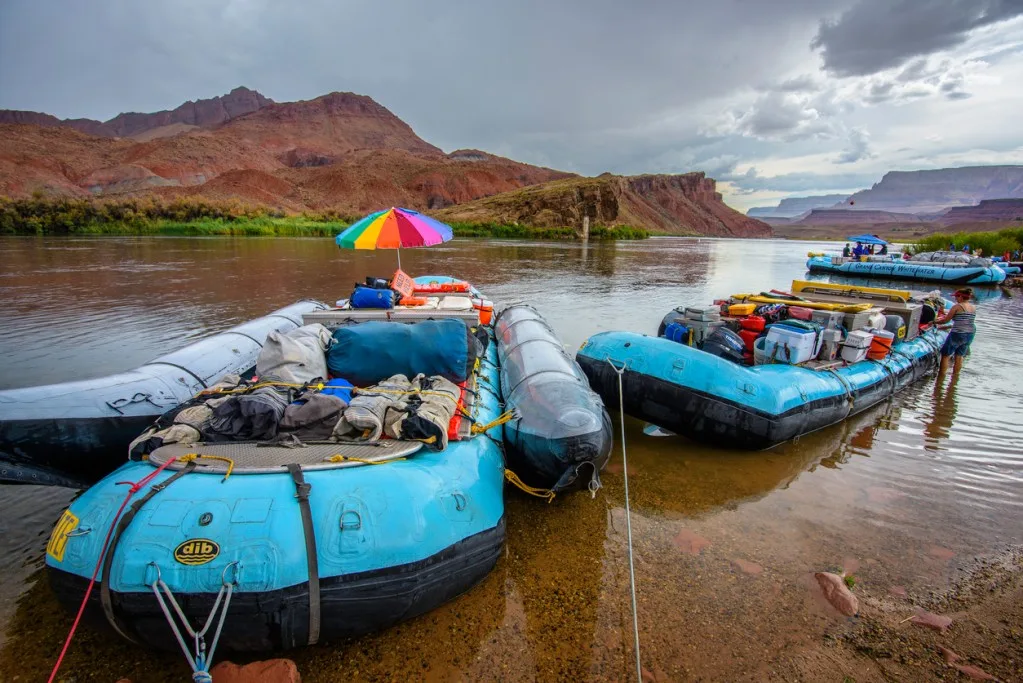When Americans create their bucket list, they may include famous sports stadiums like Fenway Park or AT&T Stadium. They might also list tropical vacation destinations like the Florida Keys or Hawaii. Others will add a few National Parks.
One of those is usually Grand Canyon National Park, and with good reason.
Stretching over 1,900 square miles, you can’t fully realize the layering of colored rocks and the vastness of this canyon until you stand along the edge.
However, before you visit, there are a few things to know. Not everything at the Grand Canyon is “grand.” Let’s dive in!
5 Reasons We Avoid the Grand Canyon National Park
Everyone says to go to the Grand Canyon. You can’t look at a photo and understand its magnificence. But before you pack up your car and start driving across the country, you may consider these five reasons to avoid Grand Canyon National Park.
1. The Crowds
It’s no surprise that one of the world’s natural wonders is busy. Although it’s not the most-visited National Park in the country, the Grand Canyon was number 13 of the parks and sites that the National Park Service managed in 2021. Over 4.5 million people visited this awe-inspiring geological wonder.
Because of the climate of northern Arizona, the Grand Canyon sees the most crowds during peak season, from May-September. Visitors worldwide flock to view the 1.2 million acres of Grand Canyon National Park.
The South Rim is busier than the North Rim, but both locations can be frustrating with so many people trying to get the perfect photo or cramming together in the spot where they can see the best sunrise or sunset.
FYI: Here are the most dangerous creatures at the Grand Canyon.
2. Long Lines
If you don’t get to the entrance very early or later in the afternoon, plan on sitting in line for a while. Some visitors will sit for an hour or more. If you arrive later in the day, usually after 3:00 pm, the line at the entrance won’t be too bad. However, you’ve limited yourself to only a few more hours of daylight at the park.
Lines for shuttle buses can also be extensive. Just like an experience at Disney World can be unpleasant due to too much waiting and not enough time to explore, the same is accurate for Grand Canyon National Park. It’s hard to avoid taking the shuttles because of how enormous the park is.
So when you visit, factor in wait times.

3. The Weather
Most visitors travel to the Grand Canyon in the summer because that’s prime tourist season and kids are out of school. The problem with visiting in the summer is Arizona can be sweltering. Even at higher elevations like the North Rim at 8,000 feet, the sun beating down in the summer can cause heat exhaustion.
Other seasons aren’t as toasty but can be windy. The winter is frigid, and the Visitors Center at the North Rim isn’t open from mid-October to mid-May.
There’s a short window in which guests can visit the North Rim, and because of that, this part of Grand Canyon National Park can have long waiting lines.
4. Campgrounds Inside the National Park Are Cramped
If you’re looking for beautiful views overlooking the canyon, you won’t find them inside the park. Camping at Grand Canyon National Park isn’t like boondocking along the red rocks of Utah or the giant cacti of southern Arizona. You won’t have much of a view except the other campers.
Although spacious enough to accommodate any size rig, the RV sites are tight. They’re also always packed during peak season. So if you don’t plan, you likely won’t camp inside the park. There are campgrounds outside of the National Park, but you’ll have to deal with driving in and waiting in line every day.
5. Gas & Food Near Park Are Outrageously Priced
Fuel stations and restaurants take advantage of tourists. If you shop for groceries within the park, you’ll pay much more than usual. Restaurants are throughout the park but plan on spending more if you dine out. For example, at Yavapai Lodge, the Yavapai Traveler’s Breakfast is $17.50 per adult and $11.50 per child.
The Yavapai Tavern has a considerable outdoor atmosphere, but The Melted Elk sandwich costs around $17.50. Stock up on groceries and gas before you enter Grand Canyon National Park.
Is the Grand Canyon Worth It?
Even with these reasons to avoid the Grand Canyon, it should still be on everyone’s bucket list. The views are breathtaking. Photos don’t capture the majesty. Your trip will be worth it even if you encounter these difficulties. Should you arrive earlier or later in the season, you’ll fare better with traffic, crowds, and weather.
Plan on dealing with long lines, crowded facilities, busy photo-opp locations, and higher prices. Do these negatives ruin the experience? No way. How can you ruin standing before a geological wonder that has been around for millions of years?
Discover the Best Free Camping Across the USA
To be honest with you, we hate paying for camping. There are so many free campsites in America (with complete privacy).
You should give it a try!
As a matter of fact, these free campsites are yours. Every time you pay federal taxes, you’re contributing to these lands.
Become a FREE CAMPING INSIDER and join the 100,000 campers who love to score the best site!
We’ll send you the 50 Best Free Campsites in the USA (one per state). Access the list by submitting your email below: